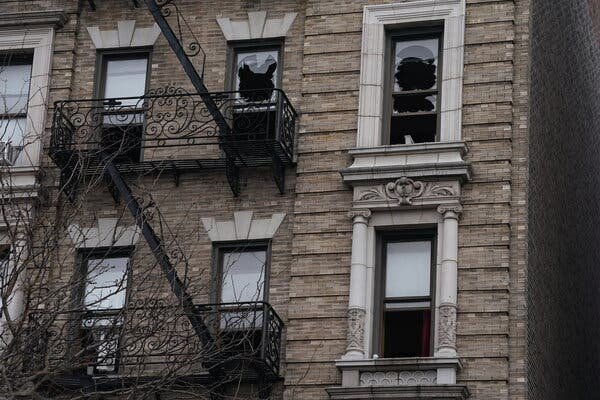The New York City Human Resources Administration has increased the number of bodies in each mass grave on Hart Island, from 150 to up to 200 caskets per trench, as burials on the island doubled during the COVID-19 pandemic. Advocates are concerned about the continuation of mass burials despite efforts to end them, and are pushing for individual gravesites and more transparency in burial practices. The city is considering options to extend burial space on the island, but advocates argue for more sustainable and respectful burial practices. There are also concerns about the accuracy of burial records and the city’s ability to locate specific gravesites.
The New York City Human Resources Administration has made changes to the burial practices on Hart Island, increasing the number of bodies in each mass grave to as many as 200 caskets per trench. This adjustment comes as the city saw a significant rise in burials on the island last year, with over 2,700 burials in 2020. The island has been used as a burial ground since 1869 for unclaimed individuals and those whose families could not afford funeral services, with over a million people laid to rest there.
In response to advocacy efforts, the city passed a law in 2019 transferring jurisdiction of Hart Island from the Department of Correction to the Parks Department and the Human Resources Administration. Despite ongoing developments to transform the island into a city park, the increase in mass burials signals a continuation of the current burial system that has been in place for decades.
The Hart Island Project, a nonprofit organization dedicated to documenting burials on the island, has raised concerns about the shift towards larger mass graves, emphasizing the need to move away from mass burials. Efforts are underway to solicit public input for the future of Hart Island, with discussions ongoing about potential changes to the burial practices.
One individual, Gloria James, shared her experience of visiting her father’s burial site on Hart Island, expressing her desire for individual gravesites and a more personalized grieving process. The issue of limited burial space on the island has prompted discussions about potential solutions, including increasing the number of caskets per trench and utilizing additional land for burials.
The Hart Island Project has proposed a plan for individual gravesites that involves a method called “lift and deepen,” allowing for the reuse of gravesites over time. This approach aims to address concerns about maintaining the burial grounds in the long term while providing a more dignified resting place for loved ones.
Efforts to improve record-keeping and transparency regarding burial locations on Hart Island are also underway, with calls for GPS coordinates to be collected for each individual buried there. Concerns have been raised about the accuracy of existing records and the need for better tracking mechanisms to ensure that families can easily locate their relatives’ burial sites.
City officials, including Councilmember Diana Ayala, have expressed interest in exploring alternative burial practices on Hart Island, such as green burials with biodegradable coffins. Discussions are ongoing about potential legislative changes to require GPS coordinates for individual gravesites and to address the environmental and capacity challenges associated with mass burials.
In conclusion, the future of Hart Island as a burial ground is the subject of ongoing debate and advocacy efforts, with a focus on respecting the dignity of the deceased and providing families with meaningful ways to honor their loved ones. The city is working towards improving burial practices on the island while addressing the challenges posed by limited space and the need for more sustainable and transparent burial solutions.
Source: TheCity.NYC









